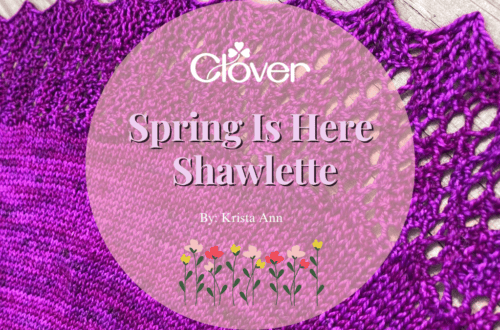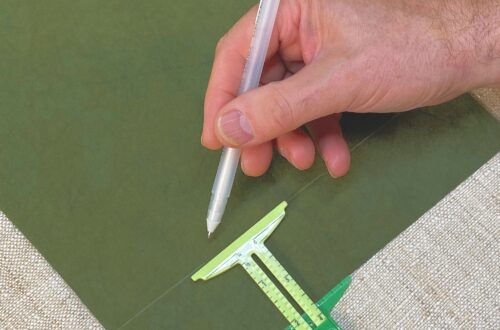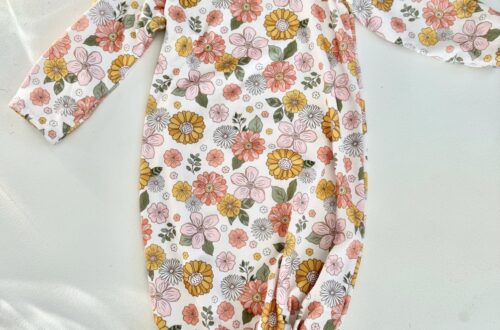Easy Summertime Applique- Tutorial
Hello friends! We have been SO HOT here in middle Tennessee that I’ve really enjoyed having a fun appliqué project to tinker around with in the heat of the day! I received a package in the mail with some amazing Clover tools to make my appliqué project super easy and I’m excited to share with you today so that you can try these tools out too. (And bonus: there’s a really fun project at the very end of this blog post using one of the appliqué tools for something that has nothing to do with appliqué or sewing and your kids will love it!)

I’ve enjoyed the art of illustrated sewing through the last few years (I wrote a blog post on it here a couple years ago) and so I was really drawn to an appliqué project of that sort. My talents do not lie in drawing and even though I can picture something in my mind, sketching it out just isn’t something I can do. So I went looking for a fun pattern to make, doing some appliqué and illustrated sewing and I found this one on Etsy called The Potting Shed by Helen Newton. You can also do some googling on illustrated sewing and find all kinds of easy, beginner appliquéd projects. I also love Minki Kim’s YouTube video tutorials here. She has great tutorials on tiny appliquéd projects such as coasters and pin cushions.

This is a list of the “must-have” Clover tools that you will want to use in any appliquéd illustrated sewing project:
- Clover Wonder Fuse
- Clover Design Pro Applique Mat
- Clover Blue Water Erasable Marker
- Clover Patchwork Scissors (Mini size works great)
- Clover Mini Iron

You will also need an illustration that either you have drawn or a pattern of your choice (see the one I’ll be using below). Now that you have everything gathered, all you need is your bin of fabric scraps and we can get started.

By using a pattern such as the one I purchased, you will receive a print-out of all the separate little elements that will go together to create your final picture. The pattern I purchased was broken down into several pages of elements and were clearly drawn with plenty of space in between each element. This makes it so much easier to work with. I cut a piece of Clover Wonder Fuse the same size as my printed pattern paper (8.5 x 11) and laid that on top of the pattern, making sure that the paper side of the Wonder Fuse is on top. Grab a pencil and trace all the elements onto the Wonder Fuse. Repeat this with all your pattern elements.
Tip: If you cannot see the pattern behind the Wonder Fuse, you can simply tape your pattern to the window and then lightly tape your Wonder Fuse over it. The light from the window will create a “light box” and you can easily see to trace the different elements.

Once you have traced all your different elements, you can now cut them out of the Wonder Fuse. DO NOT cut along the drawn lines. Simply do a quick, rough cut and set each one aside.

Now is the fun part! Look closely at your illustration and determine what color and pattern you want each of the different elements to be. Start digging through your fabric bin and pulling out what you want to use. Have fun with this but don’t over-think it! Cut your fabric scraps a little larger than the drawing on the Wonder Fuse. Using your Clover Design Pro Appliqué Mat, lay each fabric scrap on top of the mat (wrong side of fabric facing up). On top of that, lay your traced Wonder Fuse element (fuse side down). Place the Pressing Sheet (included with the Appliqué Mat) on top of the Wonder Fuse elements. Now use your hot iron to press all of the elements to the fabric scraps. You will need your iron to be hot and take your time; it takes a few minutes to get everything pressed down. The thing I really love about pressing them this way is that the fabric clings to the Appliqué Mat so it holds in place as you iron. This also eliminates any chance of getting Wonder Fuse on your iron! Continue this process with all your pattern elements.

Once the Wonder Fuse is ironed to all your elements and you’ve drawn all necessary lines to the fabric, use a small sharp pair of scissors to cut each element out. My favorite scissors are the Clover Mini Patchwork Scissors. They are sharp and tiny and they cut details to perfection. Simply cut along the drawn lines of the Wonder Fuse. Be sure to leave the paper backing on for now. Now you have perfect little “iron on” elements! Set them all to the side.

Look at each element and if there are drawn markings on the Wonder Fuse that is part of the illustrated drawing, you will want to draw those markings onto your fabric (this will be “drawn” with your sewing machine later!). If you cannot see the drawn lines when you turn your fabric over, hold it up to a window and draw them that way. I used the Clover Water Erasable Marker for this step and it has a super nice sharp point so it draws the lines with great definition. (And the blue mark comes off with a little spritz of water when your project is complete.)

Place the Appliqué Mat on top of your illustration so that the drawn pattern clearly shines through the Mat. Look at your illustration and determine what elements will actually go together to form a whole. You can see in the photo below that each of these items overlap or connect in some way. Ironing them together to form one large element makes it much easier for placement. Remove the paper backing on each of the elements that can be grouped together. Take that group of elements and lay them on top of the pattern (visible through the Mat), layering them with the bottom piece first and building on that. Hold them in place by covering them with the pressing sheet and press in place. Once everything adheres together all those small pieces become one element with the iron-on part of the Wonder Fuse still intact. It’s like magic! Look carefully at your illustration and if you have any other elements that are connected together, repeat this step. You can leave these on the Appliqué Mat for now as that gives them time to fully cool.

Now remove the paper backing from all the remaining stand-alone elements. Set them aside for now.

You will now need a piece of fabric to adhere all your little elements to in order to form the illustration! My pattern actually called for specific fabric sizes to be sewn together to create what will look like a “work bench” once my elements are all ironed on. So pay attention to what your pattern calls for; or if you’ve drawn your own illustration then you can have fun creating your own background.

Lay your background fabric on an ironing surface (I use a large wool ironing mat, but you can use your ironing board for this step, it just works better if the surface is flat). Now… here’s the tricky part. Using your illustration as a guide, you will iron on each element to the background fabric. I found it simpler to lay out every single piece before I ironed anything down. This way I could move anything that I didn’t like. Take caution in removing your grouped together and ironed elements from the Appliqué Mat so that they stay in one piece (see photo below)!

Once you have your entire design on the background fabric, carefully place the Pressing Sheet on top and press each element to the fabric backing. Remove the Pressing Sheet and now use the amazing little Clover Mini Iron to go around the edge of each element to make sure they were completely adhered (especially the tiny pieces). This is a great way to get to all the little edges without the nuisance of using a large iron and it makes it very easy to see what needs to have a little extra pressing time. The tiny little iron tip gets very hot and I really love that about it. It’s a great little tool.

This is also the time to use your Clover Erasable Marker and mark any lines onto the fabric that were not part of any of the iron on elements but are a necessary part of your illustration.

NOW!!! Lets get to the actual appliqué process! Once you are confident that your elements are all adhered to the backing fabric we will sew them in place with your sewing machine. This creates a really fun illustrated look by using black thread (as if it is black pen lines). However, you could certainly use any color thread that you want. I like the black; I think it gives great depth to the final illustration. Change your stitch setting to a tiny stitch (1.5 length) and your speed to slow. Take your time and sew around each pattern element and along all the drawn lines on the different pieces that give it definition. I like to sew everything twice because that is what I learned in Mini Kim’s video tutorials and honestly the time it takes to sew twice is worth it! Don’t get too concerned with perfection!

You are completely finished with the appliqué process and now you can turn your appliquéd illustration into any finished project you’d like. The pattern I purchased was to be a pillow but I chose to turn mine into a little mini quilt and hang it in my laundry room and wow do I love it!

Oh! And one more thing! When I was doing a little research on the Clover Design Pro Appliqué Mat I saw where you could use it as a mat for working on hot glue stick projects as the glue will not stick to the mat, so it keeps the glue off table surfaces, etc… So I bought some fun colored glue sticks and turned my grand-girls loose making super adorable window clings! I love when tools have different uses besides just sewing and this one was a blast! Good summertime crafting that they literally worked on an entire afternoon.

They made so many things but my favorites were the flowers they made for my little kitchen window! The rest of them they took home and gifted to their friends and hung on their own windows! I’m happy to tell you that when they were finished and we cleaned up the Appliqué Mat every little piece of glue just peeled right off! From now on, anytime I have a project that requires hot glue, I’ll be using the Appliqué Mat! I would recommend you purchase one not only for appliqué but for hot glue projects as well! Game changer!

I hope you are enjoying some gorgeous mornings in your yard, sewing in the hot afternoons, and mowing grass in the evenings! That is Tennessee life in June and honestly it’s my favorite and I love it! Happy Summer Sewing!
~ Dori ~


